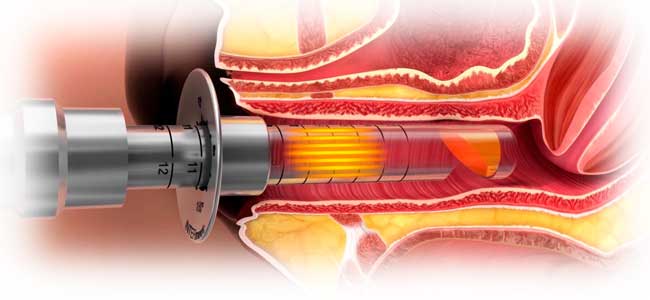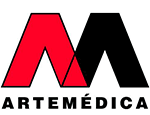Information on vaginal atrophy and dryness
Vulvovaginal atrophy (VVA) is characteristic of menopause but is also increasingly being observed in younger women due to the use of medicines such as isotretinoin, antidepressants and hormonal contraceptives. In many other cases the underlying cause is not known.
The decrease in estrogens, whether permanent or temporary, results in thinning of the vulvovaginal epithelium and reduction of its glands. The vagina thus loses wall thickness, lubrication capacity, elasticity and firmness.
This in turn results in vaginal dryness with multiple forms of genital discomfort, alterations of the saprophytic flora, a diminished defensive capacity against infections and a lesser resistance to friction, causing pain during sexual intercourse.
At the same time, and as also occurs in the rest of the body tissues, collagen formation and muscle tone decrease, causing weakening of the supporting tissues that can lead to prolapses or urinary incontinence.
When all this occurs in menopause, the overall manifestations are referred to as genitourinary syndrome of menopause (GSM).
These changes have a strong negative impact upon the sex life of women, often causing them to renounce to an active sex life and even avoid any kind of intimate contact - with the consequent deterioration of life as a couple.
Treatments for vaginal atrophy and dryness
A number of treatments are available for the management of vaginal atrophy, though the superiority of the vaginal laser currently has caused them to be used only on a supplementary basis.

Vaginal laser
Nowadays the most effective treatment option for vaginal and vulvar atrophy is the vaginal CO2 laser.
The CO2 laser, as well as the use of plasma rich in growth factors or stem cells are the references of Regenerative Medicine.
The CO2 laser is widely used as a surgical instrument, and for some time has been one of the most effective treatments in aesthetic medicine. Its more recent application in gynaecology is therefore warranted by many years of demonstrated efficacy.

Hyaluronic acid
Hyaluronic acid in vaginal hydration is the second most important reference in the treatment of vaginal atrophy.
It is a mucopolysaccharide found in almost all body tissues and fluids, and also in many other living organisms, as a structural component of the extracellular matrix.
Found in high concentrations in the skin and mucous membranes, the fundamental property of hyaluronic acid is its capacity to retain large amounts of water (hygroscopic properties).
This great capacity to retain water makes it widely used in medicine in general, and in aesthetic medicine in particular, where it is employed to hydrate, regenerate and afford volume to the skin.

Combination treatments
Plasma rich in platelet growth factors, as a treatment in medicine and in regenerative gynaecology, is a perfect complement after the CO2 laser.
Hyaluronic acid for vaginal hydration is a way to start or finish a complete vaginal laser treatment. It hydrates the tissues, improving the performance of the vaginal laser.
In topical treatments it is used to contribute to recovery.
There are oral treatments such as ospemifene that could also be used on a complementary basis.
Any of the treatments may be combined, since their mechanisms of action are different and their effects are synergistic.

Bioidentical hormones
Bioidentical hormones are currently the most effective and convenient hormone replacement therapy, and pose fewer risks. They are used to treat the effects of lowered hormone levels such as for example during menopause.
Social conditioning factors
Society, including many doctors, continues to condition women to accept resignation as the only remedy. But what until now women were forced to accept as an inevitable consequence of the passage of time is no longer so today.
At last there are truly effective remedies for vulvovaginal atrophy and dryness.
Because women have the right to urogenital health and, why not, to a satisfying sex life when she has half her life ahead of her.
That is why on October 18, 2018, World Menopause Day, from the Spanish Association for the Study of Menopause (AEEM) an awareness campaign was launched with the #NoTeConformes, joining the theme chosen by the International Menopause Society for that same World Day "positive sexual well-being".

Frequently Asked Questions
The energy is transmitted through a scanner in such a way that, randomly, thermal micro-injuries are made, leaving healthy tissue between them. This mechanism forces the vaginal mucosa to repair itself, which is repaired with a completely restored tissue, with the multiple layers it had before the atrophy and with its corresponding glands, thus returning the vaginal mucosa to its health, its lubrication and thus its functionality.
In innermost layers.
In turn, CO2 laser energy is transmitted to deeper layers than the mucosa itself, connective tissue, fasciae and even thought to muscle level, where it is able to stimulate regenerative mechanisms, production of proteins such as collagen and elastin, thereby also returning to the vagina its anatomical health, tightens the vagina and recovers the prolapse, and functional for example in the face of urine retention.
These results have been proven in pathological anatomy sections after biopsies following treatments, and are published in scientific literature.
In mild or transient cases such as postpartum atrophy and dryness or medication, a single session may be sufficient.
But in pathologies or evolutionary states such as menopause, experience tells us that the number of sessions for an optimal result is three, re-evaluating the situation after a year or a year and a half.
Following extensive experience gained in aesthetic medicine, it has been incorporated to gynaecological practice, and not only for aesthetic purposes, hydrating or increasing the volume of the labia majora, but also for regenerating and improving female genital functioning in many vaginal conditions such as vaginal and vulvar atrophy and dryness.
- Vaginal atrophy and dryness (menopause, drugs such as tamoxifen, isotretinoin, antidepressants, neuroleptic agents, etc.)
- Recurrent genitourinary infections (alterations of pH, genitourinary syndrome, etc.)
- Dyspareunia or pain during intercourse
- Pruritus
- Vulvodynia
- Painful fibrotic scars (episiorrhaphy)
Volume enhancement
- Hypoplasia or atrophy of the labia majora
- Assessment prior to labia minora reduction labiaplasty
- Vaginal canal reduction
Como all treatments with hyaluronic acid, consists of infiltration of the same in the area we want to try, vaginal mucosa, dermis or cellular tissue subcutaneous depending on the purpose with which it is made.
It is a medical act that makes in consultation under topical local anesthesia topical in cream so it is totally painless, which lasts between 20 and 30 minutes, and so it is totally painless.
The duration of hyaluronic acid in our body depends on the speed of its degradation by our hyaluronidases, the enzymes that fractionate it, and that generally ranges between one and two years.
That is why one session every year or year and a half is usually sufficient, although when hyaluronic acid is combined with a vaginal laser treatment, the need to repeat the treatment is usually less.
The degradation of hyaluronic acid is responsible for the biostimulation caused by treatments with it, since its short chains, once fractionated, are capable of stimulating the production of collagen in the fibroblast, the noble cell of connective tissue.
The latest novelty in the field of hyaluronic acid are the latest evidence that affirms that the area has been treated with the same already does not return to the state prior to treatment. It believes that this is because this is because it is capable, either itself or by some of its degradation products, activate the mother cells quiescent or "asleep" that we know that there are all over tissue, which is currently in research process.
This is because it is capable, either by itself or by some of its degradation products, activate the mother cells or "asleep" that we know that there are all over tissue, which is currently in research process.
This means that, even if the hyaluronic acid has disappeared from our tissues, the effect of its biostimulation remains.
Artemédica, aesthetic, functional and regenerative gynecology center in Murcia.
The objective of this medical discipline is to improve the health, quality of sexual life as well as the aesthetics of the female intimate areas.



